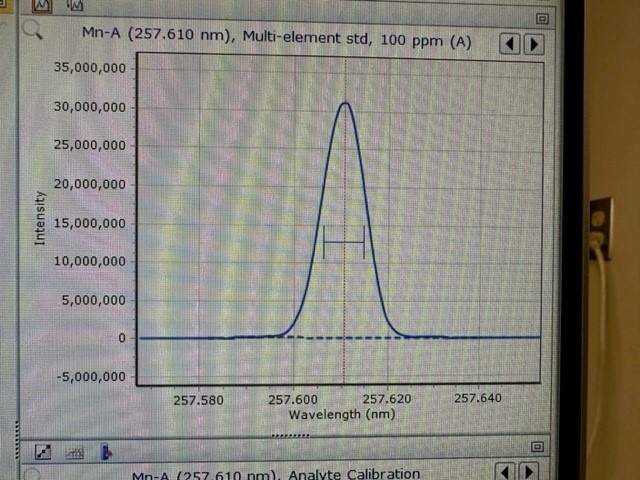We have had an issue recently after introducing a new set of multi-element standards (increasing our typical number of elements from ~6-7 elements to ~26 elements) with our new Agilent 5800 ICP-OES. Specifically, when using these new standards, we are seeing a reduction in the placement of the “H” bar on the new multi-element standards regardless of concentration, and dropping in placement/value with increasing concentration of standard. This reduction in “H” bar placement has a negative impact on the calibration curve and the resulting values of the sample analysis. I've included screenshots below to illustrate what we are seeing.
I'm not sure if this is an issue with sample prep, element interference, an instrument issue, or a software issue. For the purposes of this post, I wanted to look at the software side of things to at least get a better understanding of the “H” bar, how it plays into the calibration and analysis calculations, and if/how we can make adjustments to improve the performance/placement of the “H” bar to improve our resulting sample analysis values.
If you could look at the pics below and advise on helping us understand what is going on, it would be greatly appreciated. Thanks!!
The peak below is our older 5-6 element 100 ppm std. Good counts, high “H” bar:

Below is our new ~25 element standard at 100 ppm. Similar peak height, but the “H” bar from which the average response is taken, is much lower. What accounts for this, and is this something that can be modified in the software. If not- what would cause this (spectral interference, solids loading, etc.)?:

